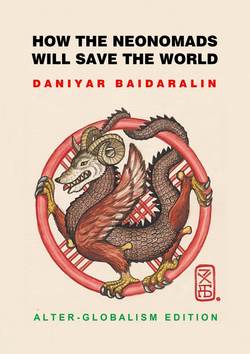Читать книгу How the Neonomads will save the world. Alter-globalism edition - Daniyar Z Baidaralin - Страница 10
THE CONCEPT: EURASIAN NOMADIC CIVILIZATION
Nomadic leisure
ОглавлениеCulture, poetry, and music
Contrary to the erroneous commonly established opinion, the Eurasian Nomads were probably the most cultural people that ever existed on Earth, in the nomadic meaning of «cultural» that is.
The reason for that was that the nomadic lifestyle didn’t require working long hours from sunrise to sunset every day, like in was for farmers or craftsmen in SC nation. Instead, the life of nomad consisted of massive, labor-intensive, but short efforts, such as four seasonal Kóshes, collective cattle shearing, felt-making, soghym, or swift war raids and military campaigns; alternated with long periods of relative calmness and leisure time.
And that leisure time was used mostly for cultural activities, arts, sports, and other pleasures. In fact, despite the harsh lifestyle, the nomads most of all valued quality time and used any occasion to throw a party. Whenever any guest, even a complete stranger, came to any yurt, he or she was admitted as a dear guest with the most respect and consideration. This was a universal law of the nomadic hospitality in peaceful times. First feed the guests, water their horses, and then ask questions. This law never changed for thousands of years.
Then came long conversations that could last for days and nights for as long as the guests were willing to stay. And if the guests possessed some valuable skills, knowledge or talents, this could easily turn into a big holiday event for the whole nomadic extended family called Aul, or even an entire tribe.
If a guest could tell good stories, old fairy tales or legends, if he was well-travelled or educated, or if she knew how to play musical instruments and perform songs and poetry, this was the happiest occasion and honor for the hosting family. Such a guest was like a pure gold, and the hosts didn’t spare any expenses or efforts to please him or her and their neighbors. The sheep was slaughtered for meat, and the horse milk qymyz and camel milk shubat was consumed in mad amounts.
The oral literature tradition of nomads was simply enormous. Unfortunately, very little of it survived to date, because the nomads rarely used writing and the poetry was passed on orally and thus was forever lost, forgotten in the folds of centuries. The roots of European traditional poetry, such as minstrels, bards, saga-tellers, and singers, lies in the EN oral tradition. At this, the later was not limited to the nobility, and was vastly greater and encompassed all layers of nomadic society. Every nomadic Aul and tribe had one or dozens of poets, musicians, and singers, and they were distinguished and nurtured by their families and neighbors.
There were a few types of poets in the Great Steppe. Some were only performing old legends and sagas, others specialized in moral and philosophical poetry, and others used their poetical talents for politics and social criticism. Often the EN staged poetic battles between the specially-trained fast-rhyming poets, similar to modern-day rap battles. There were even the shamanic poets, who used poetry to cure the ill, strengthen the weak, restore the fertility, stabilize the mentally-ill, and etc. There were also poet-warriors, actual combat participants, who used their poetry to raise the moral of their tribesmen and humiliate the enemy.
The Eurasian Nomads loved music even more than poetry. One could be simply blown away by the amount of musical instrument types that the nomads invented on their own or adopted from their neighbors. There is the Museum of Kazakh Musical Instruments in my city of Almaty, and it has a great variety of items on display, but this is only a tiny survived fracture of what the nomads used to have. There is a big array of string instruments, string and bow instruments, wind instruments, percussion instruments, jaw harps, string harps, bells, whistles, and etc. There is even an instrument made of horse hooves. Looks like the nomads were obsessed with making sounds of music out of everything they could get their hands on.
Just as there were many types of musical instruments, there were also many types of musical forms. Some are sad and long, others are short and furious or funny, merry, and spirit-lifting. There was a big cluster of love poetry, of course. There was war music, and drums with tambourines were used as signal tools in the armies. Some musicians were able to imitate dozens, if not hundreds of nature sounds, such as hooves rattle, birds singing (different species), wind blowing, water flawing, and etc.
Of course there were singers too, who were able to play instruments and sing. Those were the skills that pretty much every single nomadic girl or a boy were expected to master at least to some degree in their free time, unlike that of the SC nations, where mostly the privileged class could afford a luxury to study and perform music.
